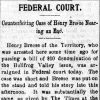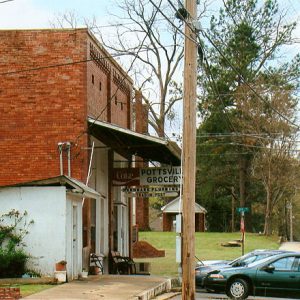calsfoundation@cals.org
Pope County
| Region: | Northwest |
| County Seat: | Russellville |
| Established: | November 2, 1829 |
| Parent County: | Crawford |
| Population: | 63,381 (2020 Census) |
| Area: | 811.13 square miles (2020 Census) |
| Historical Population as per the U.S. Census: | |||||||||
|
1810 |
1820 |
1830 |
1840 |
1850 |
1860 |
1870 |
1880 |
1890 |
1900 |
|
– |
– |
1,483 |
2,850 |
4,710 |
7,883 |
8,386 |
14,322 |
19,458 |
21,715 |
|
1910 |
1920 |
1930 |
1940 |
1950 |
1960 |
1970 |
1980 |
1990 |
2000 |
|
24,527 |
27,153 |
26,547 |
25,682 |
23,291 |
21,177 |
28,607 |
38,964 |
45,883 |
54,469 |
|
2010 |
2020 |
|
|
|
|
|
|
|
|
|
61,754 |
63,381 |
|
|
|
|
|
|
|
|
| Population Characteristics as per the 2020 U.S. Census: | ||
| White |
51,409 |
81.1% |
| African American |
2,100 |
3.3% |
| American Indian |
609 |
1.0% |
| Asian |
679 |
1.1% |
| Native Hawaiian or Other Pacific Islander |
23 |
0.0% |
| Some Other Race |
3,399 |
5.4% |
| Two or More Races |
5,162 |
8.1% |
| Hispanic Origin (may be of any race) |
6,415 |
10.1% |
| Population Density |
78.1 people per square mile |
|
| Median Household Income (2019) |
$43,462 |
|
| Per Capita Income (2015–2019) |
$23,391 |
|
| Percent of Population below Poverty Line (2019) |
18.8% |
|
Pope County lies in northwestern Arkansas, halfway between the state capital of Little Rock (Pulaski County) and the cities of Fort Smith (Sebastian County) and Fayetteville (Washington County). The county is geographically diverse, with the Ozark National Forest covering most of the northern portion, while the southern portion is located in the Arkansas River Valley and includes the cities of Russellville and Atkins. The county also is home to Arkansas Tech University.
Pre-European Exploration
Several examples of prehistoric rock art, or pictographs, dating from the Mississippian Period and perhaps earlier are found in Pope County. Four sites containing such paintings are listed on the National Register of Historic Places, although to protect them from being disturbed, their precise location is not publicly identified.
In 1541, Spanish explorer Hernando de Soto and his expedition are believed to have traveled up the Arkansas River Valley as far as the present location of Pope County. Other explorers also saw that same land from the river, including Thomas Nuttall in 1819. By the early nineteenth century, the Osage claimed the land north of the Arkansas River (including what is now Pope County) as their hunting grounds, though they lived farther north in what is now the state of Missouri.
Louisiana Purchase through Early Statehood
The Osage relinquished their ownership of their hunting grounds in what was to become Arkansas by treaty in 1808, and, in 1817, the U.S. government established a reservation for the Cherokee from eastern states to relocate into Arkansas. That reservation included the land that later would become Pope County. Not all the Cherokee moved to the reservation, but roughly 4,000 Cherokee did come to Arkansas. Already adjusting to European and American patterns of life, the Cherokee established farms and orchards, built houses, and in some cases even owned slaves. A few people of European descent were also invited by the Cherokee to live on their reservation land.
In 1820, at the request of Cherokee leader Tahlonteskee, a Protestant mission was established near what is now the city of Russellville. The Dwight Mission featured a school but also existed as a full community with a post office, library, sawmill, gristmill, blacksmith shop, gardens, and residences. In 1828, a new treaty removed the Cherokee farther west into what now is Oklahoma, and the mission closed the following year to accompany the Cherokee.
Pope County was formed on November 2, 1829, as the first Arkansas county to be formed from the old Cherokee reservation. Named after the third territorial governor of Arkansas, John Pope, the county originally included Johnson and Yell counties; most of Logan County; and parts of Newton, Perry, and Scott counties. The first county seat was at Scotia, located about two and a half miles below the mouth of Big Piney Creek on the north bank of the Arkansas River; it was the home of Judge Andrew Scott, the only presiding judge at the first Superior Court of Arkansas. A courthouse was never built because this was always intended to be a temporary location. In 1832, a post office was secured for the county. The military road that ran through Scotia was an important line of communication and trade in the early days of Pope County. The former Dwight Mission was the site of Pope County’s first blacksmith shop, mill, post office, ferry, school, and doctor’s office.
In 1830, the county seat was temporarily moved to Norristown, which no longer exists and was never officially incorporated. First settled by Samuel Norris in 1829, Norristown was a center of trade because of its location on the route between Little Rock and Fort Smith on the Arkansas River. Galley Rock served as an important community in the early and mid-nineteenth century. Located at the top of a shale bluff on the north bank of the Arkansas River, the community served as a port for steamboats on the river.
The city of Russellville was founded in the 1830s near the site of Norristown, fueled by the growing coal and cotton industries of the area, but the city of Dover became the county seat in 1840. Pope County’s first courthouse was a log cabin.
John Potts, one of the first settlers to move into Pope County, built a house and tavern on his property in 1858, making it a rest stop for the new Butterfield’s Overland Mail Company of John Butterfield. The town of Pottsville took shape around the house and inn Potts had established, although it was not incorporated until the end of the century.
Civil War though Reconstruction
The white population of the county stood at 6,905 in 1860 with 978 enslaved people. The rugged terrain of the county made the cultivation of large-scale row crops difficult, but even without the need for large numbers of farm workers, more than twelve percent of the population was held in bondage.
The Little Rock–Fort Smith Railroad was scheduled to be built through Pope County, with a depot to be located in Dover, but plans were canceled when the Civil War broke out. Records kept in Dover were moved to a cave for protection during the Civil War. Several skirmishes took place in the county during the war, including two at Norristown: May 19, 1864, and September 6, 1864.
Pope County residents had been divided over the issue of slavery, and, during Reconstruction, former Confederates assassinated the newly appointed sheriff of the county. A company of federal troops was sent to maintain the peace, but the parties could not agree, and the county was placed under martial law. Though the Pope County Militia War marked a time of violence in the county’s history, after Reconstruction, the same men who rebelled against the authority of the Reconstruction government were allowed to take control of Pope County. Even after the local government was restored, the county continued to be occupied by federal troops.
By 1870, Pope County contained thirteen political townships and had a public school system. The completion of the planned Little Rock–Fort Smith Railroad in 1873 helped the county grow, but the line no longer went through Dover as originally planned. The railroad now went through Russellville, then a small town with only a handful of buildings.
German-speaking Catholic immigrants began arriving in the county and other areas along the Arkansas River in 1878. Part of the St. Joseph Colony, the immigrants established farms in the river valley and constructed several churches, including St. Fidelis and the Church of the Assumption in Atkins.
Post Reconstruction through the Gilded Age
In May 1886, about 5,000 people came to Dover to witness the hanging of Lee Barnes, the last person to be legally executed in Pope County. As Russellville and nearby Atkins grew, they drew commerce away from Dover, and an election was held on March 19, 1887, moving the county seat. Russellville won by a margin of less than 100 votes, and, by July, construction was under way on the new courthouse. The building was never completed; a clock tower was built, but clocks were never installed. The building became unsafe and was torn down in 1930. A new courthouse was completed in 1931.
The Bullfrog Valley Gang, a group of notorious counterfeiters active in a remote valley north of Russellville, was broken up by U.S. marshals and the U.S. Secret Service in 1897.
By 1899, Pope County had flourishing cattle, hog, and agriculture industries. Coal mining also provided jobs in the county around this time, attracting immigrants from central Europe as well as from various parts of the United States.
Multiple incidents of racial violence occurred in the county in the late nineteenth and early twentieth centuries. In 1875, John Hogan died at the hands of a lynch mob for allegedly assaulting a white girl. Accused of stealing a ham, Presley Oats was lynched in 1897. Monroe Franklin died in 1912 at the hands of a mob after an alleged attack on a white woman. Multiple acts of violence occurred in 1897 during the Atkins Race War.
Early Twentieth Century
What is now Arkansas Tech University was founded in 1909 as the Second District Agricultural School, one of four agricultural schools created by the state legislature. The school opened in the fall of 1910 with 186 students. Although both world wars led to declines in enrollment that threatened the survival of the school, it outlasted both conflicts and has become a major landmark of the county.
Moonshine production in the rural parts of the county proved to be lucrative to many farmers, including William Harvey Bruce. When approached by local law enforcement agents along with U.S. marshals in 1897, Bruce killed two marshals before making his escape. Captured in Alabama, Bruce was convicted in federal court of illicit distilling before being released to face murder charges in state court. Convicted of manslaughter in 1899, he was sentenced to just six months in prison and ultimately only served four months on the charge.
An earthen dam was built on the Illinois Bayou in 1905, intended to provide hydroelectric power for the city of Russellville. Because it was poorly designed, the dam had eroded to uselessness by 1915. In 1923, Arkansas Power and Light (AP&L) rebuilt the dam, which remained an important source of electrical power for the area for several decades.
The Great Depression and droughts hit Pope County hard. In 1927, the cotton crop was short 3,000 bales, and people began migrating to Oklahoma and California in search of work. The Works Progress Administration (WPA) sponsored projects in Pope County, including paving the streets of Russellville, building the Arkansas Tech cannery building and dormitories, and building bridges and roads throughout the county, including the Russellville-Dover Highway.
Many men from Pope County served in the U.S. armed forces during World War II. Some of them served with the Arkansas National Guard units assigned to defend the Aleutian Islands against Japan in what has become known as the Williwaw War. Returning soldiers sought jobs, and a few new industries began to be established, including the Goldsmith Pickle Company in Atkins in 1945 and Sugar Creek Foods International in Russellville in 1946.
Modern Era
More industry came to Russellville in the 1960s and 1970s, including the Firestone Tube Company, the Dow Chemical Company, and Tyson Foods. The completion of Interstate 40 through Pope County in September 1968 dramatically increased transportation of people and goods in and out of the county.
At the same time, improvements were being made to the Arkansas River to reduce flooding, facilitate transportation, and provide hydroelectric power and recreational resources. Dardanelle Lock and Dam Number 10, part of the McClellan-Kerr Arkansas River Navigation System, was started in 1957 and completed in 1969. Lake Dardanelle, created by the dam, was in place by 1965, and Lake Dardanelle State Park was commissioned the next year.
During the 1960s, AP&L conceived the Arkansas Nuclear One Steam Electric Station. Plans for construction were announced on June 3, 1967, and, in 1970, AP&L announced the construction of a second unit. Together, the two units can generate more than 1.6 million kilowatts per hour using pressurized water reactors. Unit One began commercial operation in December 1974, just one year after the oil embargo. Arkansas Nuclear One supplies more than half of the electricity used by more than 600,000 Entergy customers.
Dover resident Ronald Gene Simmons embarked on a killing spree in December 1987 in which he killed fourteen members of his family, as well as two people in Russellville and wounded three more. He was executed for his crimes three years later.
While the county is “dry” (meaning that the sale of alcohol is illegal) as of 2020, several groups have attempted to change the county’s laws, though these attempts have been hindered by anti-alcohol citizens and by liquor merchants from adjacent Conway County.
Northern Pope County contains many underground fields of natural gas, part of the larger Fayetteville Shale Formation. Early in the twenty-first century, wells were dug to exploit this resource, providing a source of energy to Arkansas and neighboring states.
Pope County was struck by a powerful tornado on February 5, 2008. The tornado destroyed nearly forty homes, many businesses, and one church, and it damaged many other structures, leaving a corridor of devastation a quarter of a mile wide through the southern and eastern edges of Atkins. It killed five residents of Atkins, as well as two more in Conway County who had ties to Atkins, and injured approximately twenty in Atkins. The total toll in Arkansas from this storm was twelve dead and at least 190 injured.
Other communities in the county include Lost Corner, Famous, and London.
Industry
Arkansas Nuclear One is a major employer in Pope County, as is Arkansas Tech University. The Bridgestone inner tube plant in Russellville employed 150 people at the time of its fiftieth anniversary in 2014 and made anywhere from 10,000 to 18,000 inner tubes a day. The Park-O-Meter company, manufacturer of parking meters, is headquartered in Russellville .
Famous Residents
Jeff Davis, twentieth governor of Arkansas, spent much of his childhood around Dover and Russellville after his parents moved the family to Pope County when Davis was eight years old. Russellville resident Bob Bailey served three terms as lieutenant governor. U.S. Representative Stephen Womack was born and raised in the county, graduating from both Russellville High School and Arkansas Tech University. Russellville High School graduate Corliss Williamson played for the University of Arkansas before spending twelve years in the National Basketball Association.
Attractions
Arkansas’s first state-designated scenic byway, Highway 7, was named one of Car & Driver’s top ten driving experiences. Scenic 7 runs the length of Pope County through the Ozark Mountains.
Picklefest is celebrated in Atkins during May. Active since 1992, Picklefest was sponsored by the Dean Pickle and Specialty Products Company, the successor of the Atkins Pickle Company. Atkins claims itself to be the birthplace of the fried dill pickle.
Potts Inn Museum is one of the best-preserved stagecoach stations on the Butterfield Overland Mail Route. Five log structures are located on the property, housing period hat and clothing collections, antique farming equipment, and historic photos. The main house was built in 1850 and is furnished in the antebellum style.
The Confederate Mothers Memorial Park in Russellville is listed on the National Register of Historic Places as a significant historic site. Three monuments dedicated to the mothers of the Confederacy are located within the park. The area remains natural and undeveloped. Other buildings listed on the National Register of Historic Places include the Pottsville Citizens Bank, the Latimore Tourist Home, and the Russellville Public Library. Multiple buildings on the campus of Arkansas Tech University are also listed on the National Register, including Hughes Hall, Caraway Hall, Girls’ Domestic Science and Arts Building, Physical Education Building, Williamson Hall, and Wilson Hall.
Lake Dardanelle State Park is located near Russellville and offers visitors the chance to swim, camp, and fish. The visitors’ center houses exhibits, classrooms, a laboratory, and a wireless weather station. Lake Dardanelle is a popular place to hold bass fishing tournaments in Arkansas.
For additional information:
Biographical and Historical Memoirs of Western Arkansas. Chicago: Goodspeed Publishing Co., 1891.
Boyett, Gene W. Hardscrabble Frontier: Pope County, Arkansas, in the 1850’s. Lanham, MD: University Press of America, 1990.
Pope County Historical Association. History of Pope County, Arkansas. Winston-Salem, NC: Jostens Publishing Company, 1999.
Pope County Historical Association Quarterly. Russellville, AR: Pope County Historical Association (1966–).
Vance, David L. Early History of Pope County. Mabelvale, AR: Foreman-Payne Publishers, 1970.
Caty Henderson
Ward, Arkansas
Staff of the CALS Encyclopedia of Arkansas
Revised 2022, David Sesser, Southeastern Louisiana University





























Comments
No comments on this entry yet.